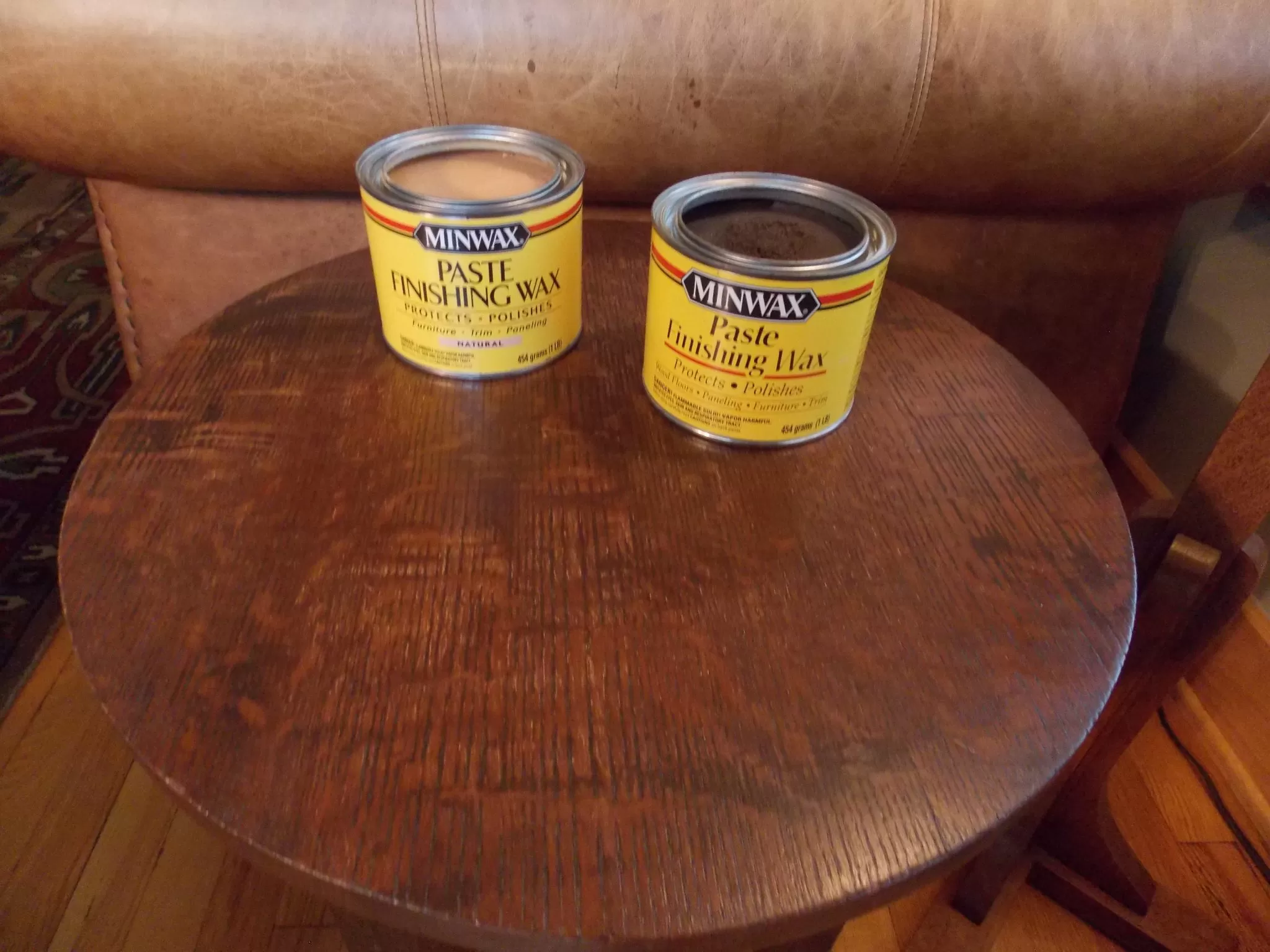Which Is Best: Wax, Polish or Oil?
The answer is paste wax.
If you want to know why, please read on.
First, paste wax should not be confused with beeswax, liquid wax or any wax variation which you squirt or pour onto the wood, for those products have been diluted with mineral spirits to make them easier to apply – but faster to wear off. Only buy quality paste wax manufactured by well-known firms, such as Minwax, Johnson & Johnson, and Butcher’s.

Unlike most furniture polishes, paste wax dries and hardens, leaving an egg-shell thin layer of protective finish on top of the wood or finish. In contrast, liquid or aerosol furniture polishes come in a confusing array of formulas, but all share one thing in common: they soon evaporate, so you then have to apply more of it to maintain the temporary sheen they produce.
The best way to grade furniture polishes is simple: don’t buy any of them.
Furniture oils are equally as confusing, for they can range from scented mineral oil to oil finishes which actually dry and harden in the wood. The scented oils are often marketed as a cleaning product used to moisten a dusting cloth. As such they are relatively harmless, although they do dent your wallet, as they are also intended to evaporate rapidly so that you buy more of them.
We’ll leave the subject of oil finishes that harden in the wood for another time, as our focus today is finding the best product to protect an existing finish without harming or altering its appearance unnaturally.
Which conveniently brings us back to paste wax.
Paste wax was utilized during the Arts and Crafts era to strengthen and fortify dried shellac, which was the most popular furniture finish of the time. Shellac, however, is susceptible to heat, alcohol and standing water, so a coat of quality paste wax over it provides additional protection without altering its appearance.
Which is why it is still the best product to apply to vintage Arts and Crafts furniture.

Speaking of application, I save all my worn athletic socks, as they make great applicators for paste wax. I work the paste wax into the wood with small, circular strokes, then immediately erase my swirls with a second pass in the direction of the grain of the wood. After five minutes I test the wax by rubbing a small section with a clean sock. If the sock removes the soft wax, I give it a little longer to begin to harden. When the time is right, the clean, soft sock will buff the semi-dry wax into a satin sheen – again buffing in the direction of the grain.
After buffing the entire piece, I give the paste wax a few hours to completely harden, then buff it yet again with yet another clean, soft sock to complete the application process.
As for daily or weekly maintenance, I simply wipe off any spills or dust with a damp cloth, followed by a pass with a clean, dry cloth.
And while I might re-wax table tops once a year, I may never re-wax sections which don’t get any use, such as table legs, Morris chair slats, chair backs, etc.
So erase all doubt, and stick with paste wax.
by Bruce Johnson
